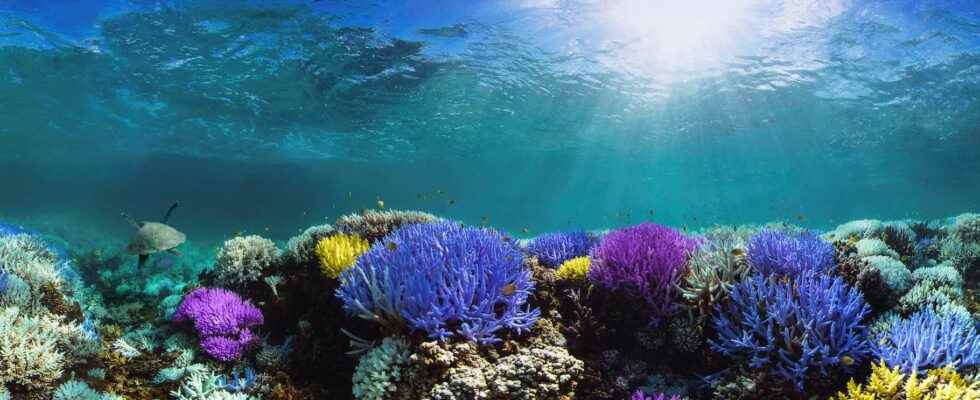The sunscreen we slather on every summer is designed to protect us from radiation. But when it ends up in the sea — thousands of tons every year! –, it harms the health of corals and anemones. Researchers have just updated the operating mode of the main suspect.
You will also be interested
[EN VIDÉO] Great Barrier Reef: Underwater life thrives despite global warming Despite the lockdown, the Schmidt Institute for the Ocean continued to conduct exploration expeditions to Australia’s Great Barrier Reef. Scientists have made a string of discoveries, with species never seen before, including 10 new species of fish, sea snails or sponges, as well as the deepest living corals ever seen in eastern Australian waters.
Oxybenzone. It is an organic chemical compound (C14H12O3) which has the property of filter ultraviolet responsible not only for tanning, but also for the aging of the skin and its cancer. This is why it is found in many sunscreens. Trouble is, it damages corals — much less than many other factors, sure, but still. Sunscreens that contain it have also been banned in the US Virgin Islands, for example, and in Hawaii.
But for scientists, this was not enough. They needed to understand by what mechanism oxybenzone harms corals — and anemones. That’s what Stanford University researchers (United States) explain today. And surprise, while oxybenzone protects us from radiation from the sunthe compound does the exact opposite for corals.
Sunscreens are a big distraction from the real threats to coral reefs. Focusing on sunscreens is like rearranging the furniture while your house is on fire. https://t.co/cslM2KP5qY
— Simon Donner (@simondonne) May 8, 2022
Other dangerous compounds in sunscreens?
It turns out that corals — and anemones — metabolize oxybenzone in such a way that the resulting substance forms harmful radicals when exposed to sunlight. And only in this case. Radicals who are all the more aggressive than with the water warmingcorals tend to get rid of symbiotic algae capable of protecting them from toxins produced from oxybenzone.
Researchers now fear that this compound, which has been criticized for several years, is ultimately not the only one to jeopardize the survival of corals. Other ingredients in sun creams indeed have similar chemical structures. Who could therefore also form metabolites phototoxic. Sunscreens based on metals — as the zinc where the titanium –, whose functioning is fundamentally different, could be safer for corals. But the researchers prefer to dig deeper into the question before concluding.
Interested in what you just read?
